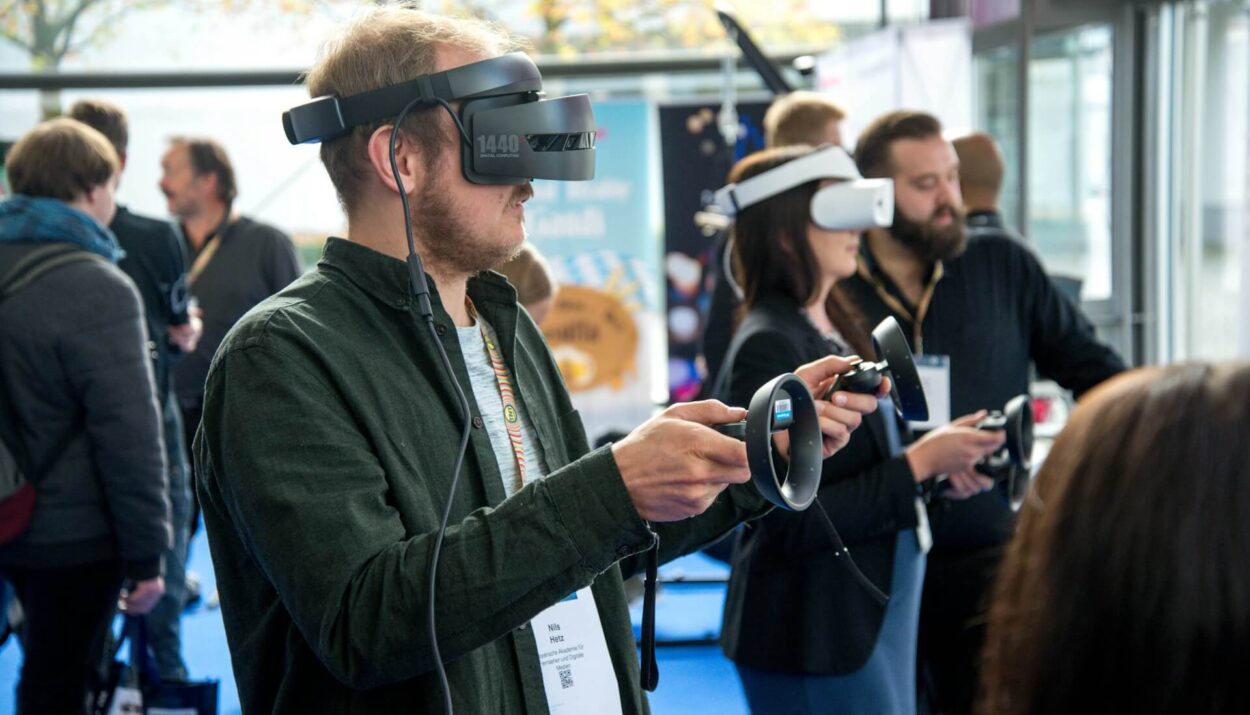The realm of digital interaction and immersive experiences has spawned endless possibilities with the advent of Augmented Reality (AR) and Virtual Reality (VR). These cutting-edge technologies have surged beyond their novelty to become critical components in several industries, from entertainment and gaming to education and healthcare.
But as the realms of AR and VR expand, so does the conversation around which is better suited for certain applications and why. This post explores the current landscape, the strengths and weaknesses of each technology, and their respective impacts on the world.
Defining AR and VR
Before we plunge into the showdown, it’s imperative to distinguish between the two titans. AR is a blend of digital information and the physical environment in real time.
It overlays new information on top of what you can already see, typically through a smartphone, tablet, or specialized glasses. VR, on the other hand, is a purely digital environment that is experienced through a headset, completely immersing users in an artificial world, void of physical surroundings.
Where the Real World Meets Virtuality
The debate over AR vs. VR isn’t just about what’s cooler; it’s about what’s more relevant and potentially more impactful. AR offers an exciting playground for businesses to engage with customers without detaching them from reality. Virtual try-on sessions, interactive in-store experiences, and navigation aids are just a few ways in which AR is transforming how we shop.
Conversely, VR excels at creating experiences where the real world is a hindrance, not a help. Think of your favorite RPG games; VR can bring that level of immersion to any scenario you can imagine. From training simulations for complex surgeries to visiting historic events in a fully realized ancient era, VR transports individuals without leaving the room.
The Economics of Immersive Tech
For technology to be truly impactful, it can’t just be fun; it must be feasible and scalable. AR wins in terms of adaptation and cost-effectiveness. Because AR can merge seamlessly with our current devices, the barrier to entry is lower. We’ve seen apps like Pokémon GO wildly succeed because they reached a broad market with minimal investment in hardware.
When it comes to VR, the economics are a bit different. VR experiences usually require more sophisticated headsets that, while becoming more affordable, still carry a higher price tag than your average smartphone.
This has limited VR’s penetration into the market compared to AR. However, with the growth of standalone VR headsets and their expanding library of software, we’re seeing the gap close.
Niche Domains and Market Disruption
Different technologies are finding their niches based on their capabilities. In the world of gaming and entertainment, VR has carved a significant space.
It offers a level of immersion that few other mediums can provide, making it ideal for at-home escapism. AR, on the other hand, has taken over spaces like real estate, where it can visualize renovations or decor in a space before any physical changes are made.
Disruption is at the heart of where these technologies meet industry, and we’re just scratching the surface. With AR, we’re seeing it reshape traditional media, like advertising, by making it interactive and personalized. VR is becoming a mainstay in therapy for phobias and PTSD, providing controlled immersive environments for treatment.
Looking to the Future
The future isn’t just one or the other. It’s a convergence of AR and VR that could potentially redefine how we interact with the digital and physical worlds. This fusion is known as Mixed Reality (MR) and promises synergies that neither AR nor VR can provide alone.
For now, businesses and creators must consider the strengths and limitations of AR and VR to craft experiences that are enriching and practical. The technology is in the hands of the innovators, and the possibilities are as vast as the digital environments they create.
The Verdict
Despite being pitted against each other often, it’s clear there’s no outright winner in the AR vs. VR debate. Instead, the ultimate success of both will rely on their respective abilities to complement and enhance one another.
While AR may boast a more accessible platform currently, VR’s potential for deep immersion cannot be overstated. It’s not a matter of one outpacing the other but rather how they can be utilized in tandem to create truly awe-inspiring experiences. The true power lies in their combined force and it’s a force to be reckoned with.
The digital landscape is transforming at a rapid pace, and it’s an exciting time for both developers and consumers. The exploration into what AR and VR have to offer is only just beginning, and as technology continues to evolve, the lines between the two may blur, leading to a new era of digital experiences. The question isn’t which will reign supreme, but how each will contribute to the richer fabric of our digital lives.






